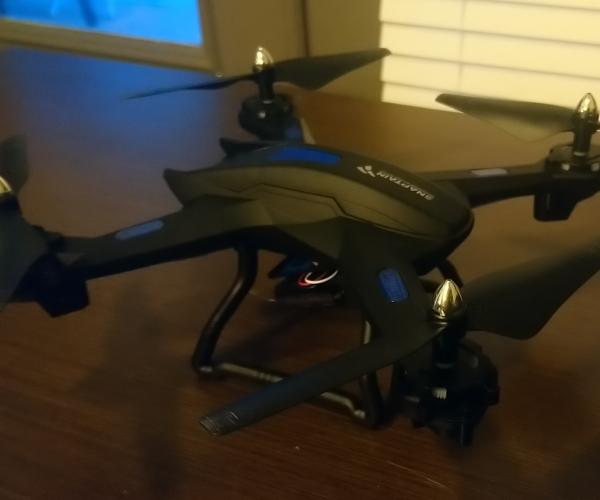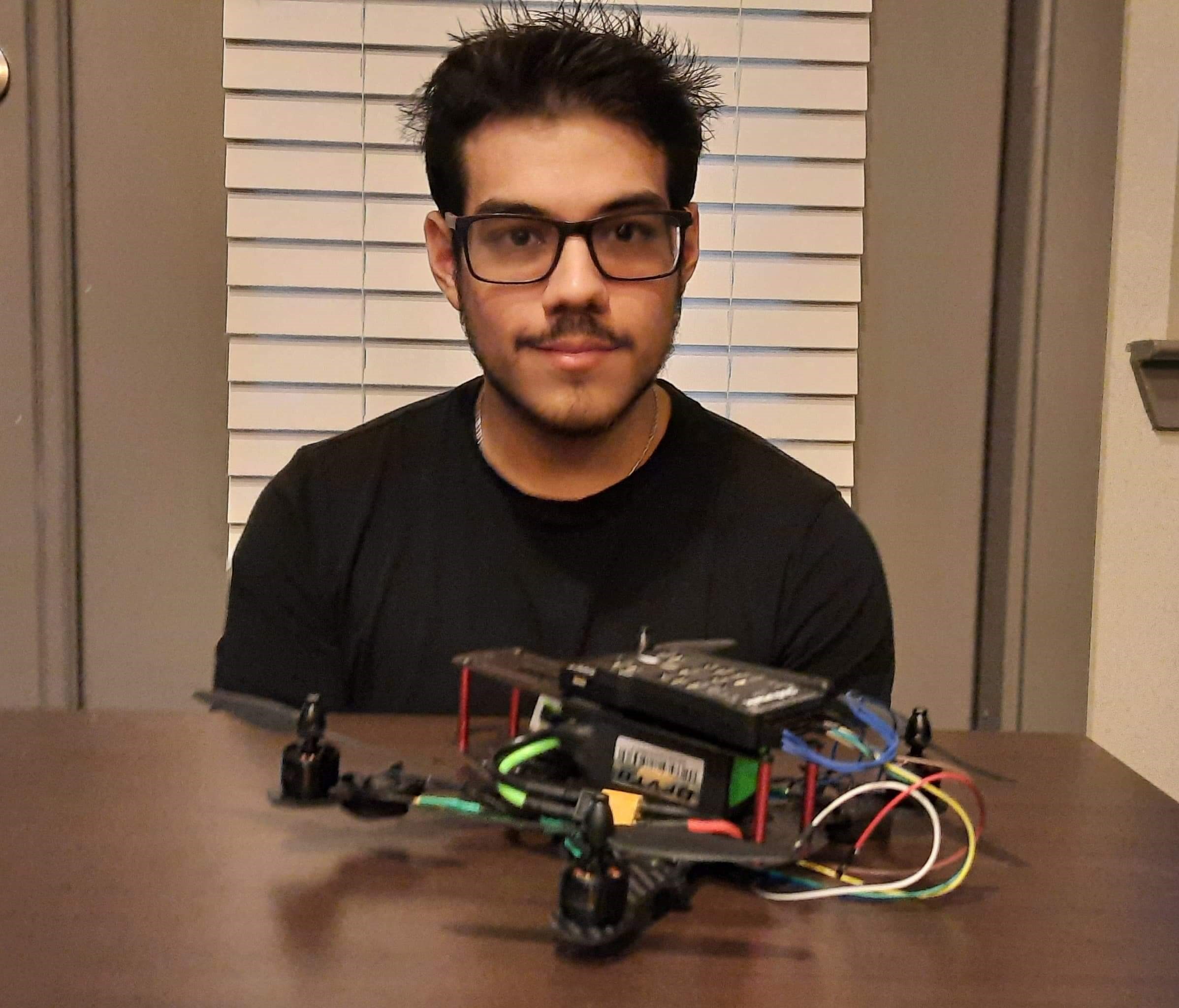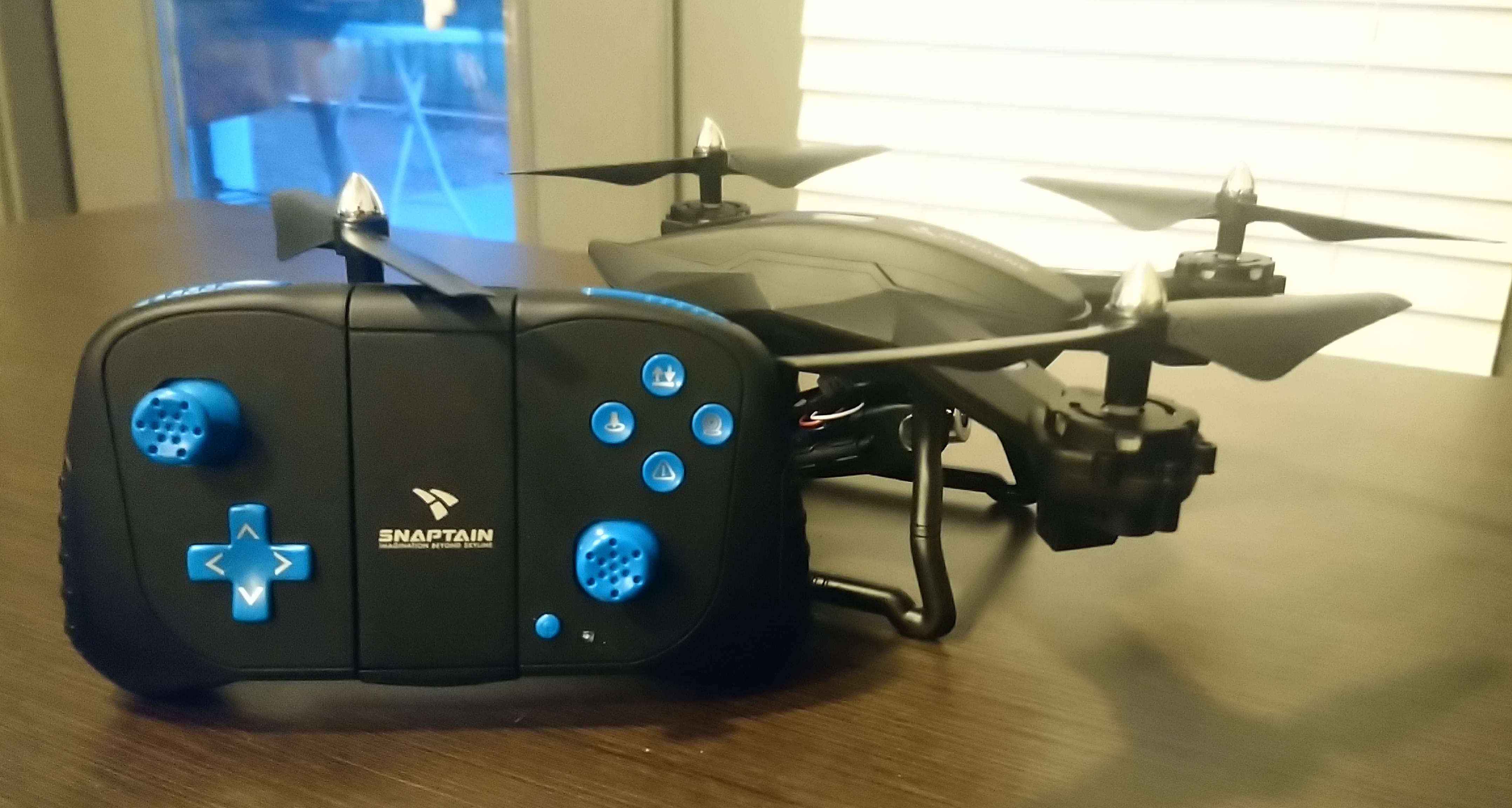
by Martin Wallace


by Martin Wallace
UTA Libraries would like to Introduce Ryan Schulze as our new drone club coordinator and drone training consultant. Ryan is a senior in Mechanical Engineering and has been one of our most active and engaged drone club members since drone club first began. We hired him at the beginning of fall 2020 to replace the irreplaceable Thomas Perappadan who led drone club from its inception in spring 2019 until he graduated in May 2020. If you have questions about drone lending and/or safety training, you can contact Ryan at librarydrones@uta.edu. (Note: Ryan co-authored this blog post with me.)

Ryan, shown holding our heavily damaged, house-made PixHawk FPV drone that we crashed during test-flight in spring 2020.
As shown in the above photo, Ryan has some work to do over spring 2021 semester on our PixHawk FPV quadcopter that we crashed and critically damaged in spring 2020. Ryan will reattach the 4-in-1 ESC, replace the whole radio control system, including the transmitter, and readjust the frame alignment. Ryan is replacing the previous battery with a smaller, more compact battery. He made this decision because previously this drone was prone to undamped vibrations, yielding wobbling during flight; while this could potentially be due to mistuned PID gains, it could also be due to an imbalance of the weight, which hopefully the smaller battery will remedy. If the drone continues to wobble after replacing the battery and redistributing the weight, he will begin tweaking the PID settings to resolve the wobbling issue. Additionally, Ryan is building a second PixHawk quadcopter based on what he learned from our previous failures, taking what we’ve learned from that experience to improve the next iteration of the PixHawk design. Ultimately, we will have two PixHawk PFV drones. Lastly, Ryan is developing teaching and learning materials in anticipation of reduced social distancing measures, when we can come together again and hold workshops. Over the fall 2020 semester, Ryan drafted a beginner-friendly “anatomy of a drone” primer, which we will soon share with the world in form of an Open Educational Resource.
UTA Libraries has drafted and approved its official drone lending policy (which will be published soon). Now UTA community members may borrow one of our quadcopter drones for up to 7 days. We have three drones available for checkout, the Snaptain S5C WiFi FPV Drone, shown here and in the blog post thumbnail, above:

Photo of Snaptain 5SC Quadcopter with Transmitter
The Snaptain is an in expensive, beginner-quality quadcopter with a fixed, forward facing 720p camera. It requires a free app available through iTunes or Google Play to access its video features, as well as some other advanced features; it does not include FPV goggles. Users must complete our free FAA safety training for recreational flyers, fill out a special application, and sign an agreement form (all of which will be published soon) before they are permitted to borrow a drone. Please feel free to contact Ryan for inquiries regarding our drone lending policy.
UTA Libraries now offers our own free FAA-approved safety training for recreational flyers. We go over FAA rules for recreational (non-commercial) flyers, how to register your drone ($5.00), and how to use the free B4UFly app to find a legal place to fly your drone. This training can be completed online over Teams, Zoom or another desired platform and only takes about 45 minutes to an hour. Again, contact Ryan to schedule one-on-one training or training for your group.
Because of COVID-19 social distancing protocols, we are unable to provide hands-on flight training at this time. Due to this, we are temporarily waiving the face-to-face flight training requirement for borrowing drones. In the place of hands-on training, we will provide links to some online videos about how to control a quadcopter using a handheld transmitter, and then require a short quiz about the content to verify that you have learned the basics about quadcopter control. When social distancing protocols are loosened up and we are able to once again provide in-person flight training, attendance in that training will again become a requirement for borrowing a drone.
It should be noted that neither the free FAA-approved safety training for recreational flyers nor the flight training session are the equivalent as FAA’s UAV pilot’s license training and certification. Our training is provided solely for recreational, non-commercial flyers. However, we can help you identify FAA-approved, third-party licensing courses for non-recreational (commercial) pilots if you need help. Once again, contact Ryan if you have questions about this.
Add new comment